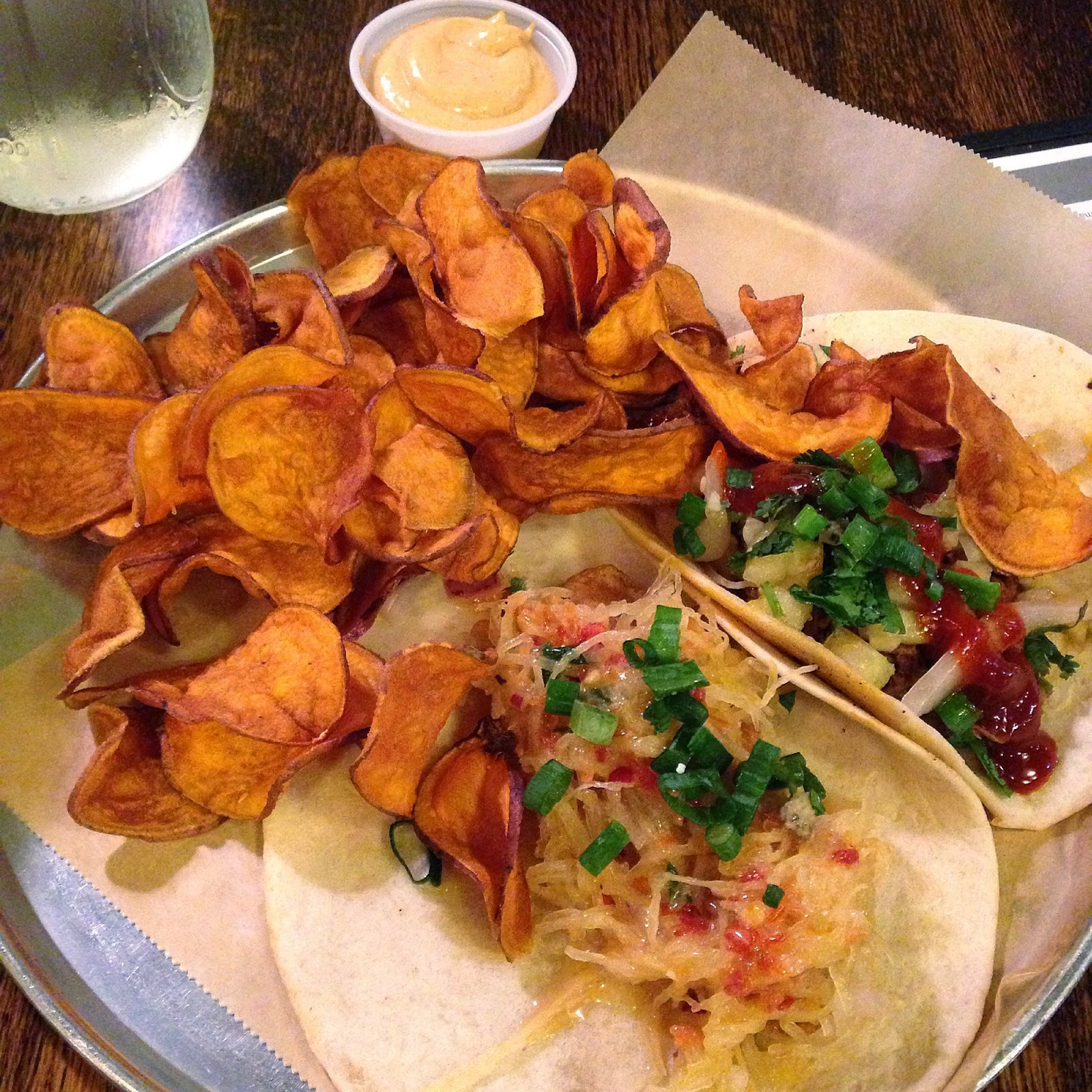If you like food, then you'll love Crafted. Kristina Fuller, culinary wizard behind Crafted tacos, has been so successful in matching flavors with our taste buds that we can be sure to see more of her inventiveness with her next restaurant come May. What started as her love of tortilla, being the utensil of choice, has led Fuller into her cozy nest on Elm and onward.
Her menu reinvents the taco bringing in an explosion of unfamiliar flavor combinations. Seemingly unlikely pairs (perfected duck confit, cabbage slaw with a fishy BBQ glaze) that complement each other tenfold. Each bite feels like a new taste sensation, almost like a wake up call- "hey, I didn't know this existed."
Her menu reinvents the taco bringing in an explosion of unfamiliar flavor combinations. Seemingly unlikely pairs (perfected duck confit, cabbage slaw with a fishy BBQ glaze) that complement each other tenfold. Each bite feels like a new taste sensation, almost like a wake up call- "hey, I didn't know this existed."
This is not your beef-lettuce-cheese-sour cream taco. These
creations body slam and consistently put to shame that guy. For instance, the
“Messenger” taco consisting of chorizo, scrambled egg, potatoes, red gravy,
avocado slices and crumbled queso, puts a completely new twist on this Mexican
inspired cuisine. Although the egg was understated and a hot sauce definitely needed, the Messenger was fresh, light and delicious.
Fuller has not just created one hellofa taco, she did it ten
times. If you’re not one for going wild with ingredients and prefer a more old
school meal, Crafted lets you build your own (though probably less glamorous)
taco. The menu is so intriguing that it
is almost guarantees a return visit. Luckily, the menu lets you mix and match
your taco order, yet the decision is still very difficult. I was stuck between
four tacos before the waitress came to the rescue (though I opted for two to
go).
I had the “Oxford” which is compromised of fried
chicken, spaghetti squash slaw and spicy asian mustard. I don’t usually choose
chicken when it comes to tacos, but the spaghetti squash slaw had me
interested. It was a good taco. It didn't taste spicy, but after a moment the
Asian mustard punched in and my nostrils filled with a magnificent burn. Almost
so that I couldn't pick up the rest of the flavors; it was indeed the Jet Li of
mustards. The second taco that made the cut is the “Wayfarer.” Fuller
hit it out of the park. A perfect balance of sweetness from the BBQ pulled pork
paired with a Korean red sauce that has just the right amount of kick to it. The
corn salsa provided a nice crunch consisting of sesame marinated cucumbers- a staple to this taco- definitely helped bind the juicy flavors.
.jpg) |
| Bowtie and Wayfarer |
Other favorites, such as the “Hoodie” introduces falafel to
tortilla. I haven’t tried it, but have heard great reviews. The “Big Truck”
which is made with pulled pork BBQ, mac and cheese and topped with onions,
didn’t need my trying. It is obviously a winner, and if you have a picky child,
this would be the one to choose. You just can’t go wrong with those
ingredients.
 |
| Oxford and Wayfarer |
Hopefully this fusion of flavors, which has also taken heed
in burger joints, will continue to inspire chefs around this great state. You
will not be stuffed- the portion sizes seem small at first, but these are gourmet tacos and along with your pick
of sweet potato chips, beans, salsa and more (made daily), you will leave satisfied. It is a
meal that can be enjoyed on a regular basis, perfect for lunch with a friend.
The restaurant is narrow so the noise tends to bounce quite a lot, but the
ambiance is still there. For a relaxed, fun meal that is worth every penny
(most entrees under $10) you will walk away a happy camper.
Crafted has done truly that: crafted a taco filled with
unique ingredients to make a fusion of flavors. And if you can’t get enough,
you’re in luck, Crafted will be expanding with a new concept menu and to a new location on 600-C Battleground Ave 27401.
Details:
219-A South Elm Street
Mon.- 11 a.m. - 2 p.m.
Tues.-Sat. 11 a.m.- 10 p.m.
Sun.- 11 a.m. - 3 p.m.
craftedtheartofthetaco.com
336.273.0030
Details:
219-A South Elm Street
Mon.- 11 a.m. - 2 p.m.
Tues.-Sat. 11 a.m.- 10 p.m.
Sun.- 11 a.m. - 3 p.m.
craftedtheartofthetaco.com
336.273.0030













